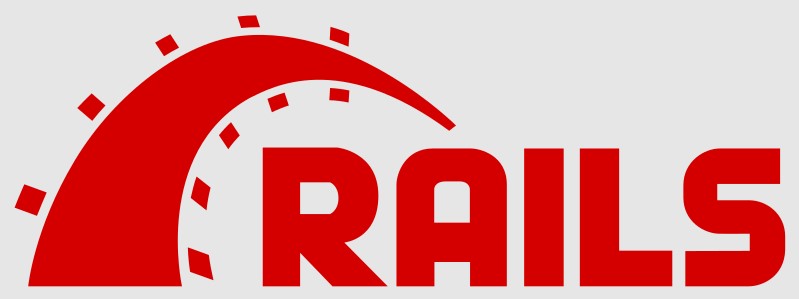Essential Ruby Frameworks for Modern Development
— September 20, 2019Ruby is a versatile and powerful programming language used to develop web applications and manage server-side scripting. Companies such as Twitter and Airbnb have leveraged Ruby to build scalable solutions rapidly. Its ability to simplify development processes has made it a favorite among tech professionals.
Ruby’s essence includes speed, efficiency, and accessibility. Its simplicity, combined with a gradual learning curve, has encouraged widespread adoption. Ruby development services are now thriving to meet the growing demand for expert Ruby programmers.
This article aims to guide managers in selecting the most suitable Ruby framework for their projects. While Ruby on Rails remains the dominant framework, emerging options have gained traction and are worth considering. Below, we delve into the most popular Ruby frameworks, detailing their strengths and suitability for various software development needs.
Philosophy and Design of Ruby on Rails
Ruby on Rails is a framework designed with clear principles to streamline web development while minimizing complexity. Its philosophy is anchored in two core concepts: Convention over Configuration (CoC) and the Don’t Repeat Yourself (DRY) principle. These guiding principles shape how developers interact with the framework, allowing for efficient and consistent application development.
The Rails Doctrine, a foundational guide for the framework, encapsulates these ideas, influencing both its philosophy and technical design. This enduring guide ensures that Ruby on Rails maintains its focus on developer productivity and simplicity in implementation. By adhering to these principles, Rails offers an efficient and intuitive development experience.
Convention Over Configuration (CoC)
The principle of Convention over Configuration aims to minimize the need for repetitive code by adhering to a set of standardized practices. Developers only need to define behavior that deviates from the expected norm. For instance, if a model class is named Sale, Rails assumes the corresponding database table is named sales. This automatic association eliminates the need for explicit configuration unless a developer intentionally breaks the convention. For example, if the table is named products_sold instead, a configuration would be necessary to establish this custom mapping.
By adhering to conventions, developers can write less code, reducing redundancy and errors. This approach ensures a smoother workflow, especially for teams, as the predictable structure fosters better collaboration. The framework’s conventions cover various aspects of development, including file organization, naming conventions, and database schemas. This consistency accelerates development without sacrificing flexibility for customization.
Don’t Repeat Yourself (DRY)
The Don’t Repeat Yourself principle ensures that every piece of information in a Rails application exists in a single, unambiguous location. This approach minimizes redundancy and simplifies code maintenance. For example, when using Rails’ ActiveRecord module, developers do not need to define database column names in model classes. Instead, Rails automatically infers this information from the database schema based on the class name.
This principle reduces potential errors caused by inconsistencies in duplicate code. Changes to a single source of truth are instantly reflected across the application. This simplicity allows developers to focus on higher-level functionality rather than spending time managing redundant definitions.
Fat Models, Skinny Controllers
Another design philosophy embedded in Ruby on Rails is the idea of Fat Models, Skinny Controllers. This principle emphasizes placing most of the application’s business logic within the model layer while keeping controllers light and focused on handling requests and responses. By centralizing logic in the models, Rails promotes a cleaner separation of concerns, ensuring that controllers remain easy to understand and maintain.
This approach simplifies debugging and testing by isolating application logic within models. Models handle data manipulation and business rules, while controllers focus on directing traffic and interacting with the views. The result is an application architecture that is easier to scale and modify as requirements evolve.
Hotwire and Rails 7.0
Rails 7.0 introduced new tools and philosophies to enhance developer productivity, including HTML Over The Wire (Hotwire), conceptual compression, and advanced security measures. These innovations reflect the framework’s commitment to creating a seamless development experience, particularly for individual developers or small teams—commonly referred to as the One-Person Framework.
Hotwire simplifies building interactive web applications by replacing traditional JavaScript-driven updates with server-rendered HTML delivered via WebSocket. This approach reduces the need for complex JavaScript frameworks while providing fast and dynamic user experiences.
Conceptual compression further simplifies the framework by integrating new tools and abstractions that reduce the mental effort required to manage complex applications. This design choice makes Rails an attractive option for developers seeking efficiency and simplicity.
Rails 7.0 also emphasizes security, incorporating modern standards to protect applications from vulnerabilities. By combining usability with strong protections, Rails continues to address the practical needs of web developers while fostering safe application development.
Ruby on Rails
Ruby on Rails is the cornerstone of Ruby frameworks, widely recognized and utilized by developers worldwide. Its popularity stems from an active open-source community that consistently releases new libraries and updates.
Ruby on Rails streamlines coding processes by requiring fewer lines of code, increasing development speed significantly. With an extensive library of plugins and modules, developers avoid redundant tasks, focusing instead on building unique application features. Independent studies suggest that teams using Ruby on Rails can create applications 30-40% faster than those relying on other programming languages.
The framework’s standardized file storage and clear conventions ensure projects remain organized, further enhancing productivity. Additionally, Ruby on Rails integrates essential security features aligned with the Secure Development Lifecycle, providing a robust foundation for building safe applications.
A prime example of its capabilities is Kickstarter, the global crowdfunding platform. Initially developed using Ruby on Rails in 2009, Kickstarter upgraded its platform to Rails 5 in 2017. Their Site Reliability Engineer emphasized the framework’s role in maintaining site security and performance. Ruby on Rails continues to be an excellent choice for organizations prioritizing efficiency and safety.
Hanami
Hanami is a newer Ruby framework that has already distinguished itself within the development community. Released in 2018, this lightweight framework emphasizes flexibility and performance.
Hanami includes useful features such as HTML escaping, a clear database API, and Content-Security-Policy capabilities. Developers can access these features individually, avoiding unnecessary downloads. This modularity makes Hanami highly adaptable, particularly for startups and companies outsourcing Ruby development.
The framework’s efficiency is another notable strength. Hanami developers report that it uses 60% less memory compared to other full-featured frameworks like Ruby on Rails. This makes it an appealing choice for projects requiring a leaner framework without sacrificing functionality.
Hanami also excels in database management. Its repository pattern separates application logic from database queries, simplifying the development process and reducing potential errors.
Brazilian financial services startup Creditas demonstrates Hanami’s value. The company built its web application using Hanami, enabling users to secure loans with their homes or cars as collateral. The framework’s memory efficiency and modular design contributed to the project’s success, showing its potential for innovative projects.
Sinatra
Sinatra is a well-established Ruby microframework, designed for developers seeking a lightweight and flexible alternative to Ruby on Rails. Created in 2007, it has become a popular choice for small-scale applications.
Sinatra’s simplicity is its defining feature. With just 2,000 lines of code compared to Ruby on Rails’ 100,000, Sinatra enables faster development cycles. Its streamlined design is ideal for projects that don’t require a full-stack framework, reducing both development time and complexity.
A standout capability of Sinatra is its ability to create fully functional web applications in a single file. This minimalist approach provides developers with maximum creative freedom, as the framework imposes no strict assumptions about the view model.
An example of Sinatra in action is the Kapow Comics app. This application allows comic book collectors to manage their collections, track market values, and set resale prices. By leveraging Sinatra, developers built a lightweight, user-friendly platform with speed and efficiency.
Padrino
Padrino is another Ruby microframework, built on the foundation of Sinatra. It offers developers increased flexibility and control, making it ideal for rapid yet customizable application development.
Padrino provides superior speed and stability compared to full-stack frameworks. Its low memory usage and ability to handle high request volumes make it a reliable option for high-performance applications. Developers also appreciate the freedom to choose components, tailoring the framework to specific project requirements.
The travel-focused web application Matia illustrates Padrino’s strengths. Designed to connect a community of travelers, photographers, and writers, the platform relies on Padrino for its backend. The framework’s speed and stability allowed developers to deliver the application quickly without compromising quality.
Cuba
Cuba is a minimalist Ruby microframework designed for rapid application development. Inspired by the Rum framework, Cuba targets small-scale projects that don’t require extensive functionality.
The framework’s tagline, “Ceci n’est pas un framework” (“This isn’t a framework”), reflects its minimalist philosophy. Cuba offers only essential features, reducing resource consumption and speeding up development cycles. It is particularly effective for projects requiring efficiency and simplicity.
Chef’sFeed, a popular website offering dining and drinking guides, utilized Cuba to create its platform. With a small team, developers used Cuba’s lightweight structure to quickly build an interactive and flexible web application.
Conclusion
Ruby on Rails is defined by its commitment to simplicity and efficiency, achieved through principles like Convention over Configuration, Don’t Repeat Yourself, and Fat Models, Skinny Controllers. These philosophies streamline development, reduce redundancy, and create a predictable structure that benefits developers of all experience levels. Innovations such as Hotwire and conceptual compression introduced in Rails 7.0 demonstrate the framework’s dedication to evolving with developer needs. By adhering to its core principles, Ruby on Rails remains a powerful tool for building scalable and maintainable web applications.
Today, Ruby remains a cornerstone of web development, valued for its ease of use, flexible syntax, and ability to streamline complex projects. Its active open-source community continues to develop frameworks that expand Ruby’s capabilities, making it an essential tool for modern developers.
Ruby on Rails dominates as the most widely adopted framework, but alternatives like Hanami, Sinatra, Padrino, and Cuba offer distinct advantages for specific use cases. Each framework balances speed, efficiency, and functionality in unique ways, enabling developers to choose the best fit for their needs.
Project managers should evaluate their objectives carefully when selecting a Ruby framework. For larger, full-stack applications, Ruby on Rails may be the best choice. For smaller, lightweight projects, options like Sinatra and Cuba provide efficient alternatives. Consulting with experienced Ruby developers or firms can further ensure project success.
By leveraging Ruby’s versatile frameworks, companies can achieve efficient and reliable application development, tailored to their specific needs.








